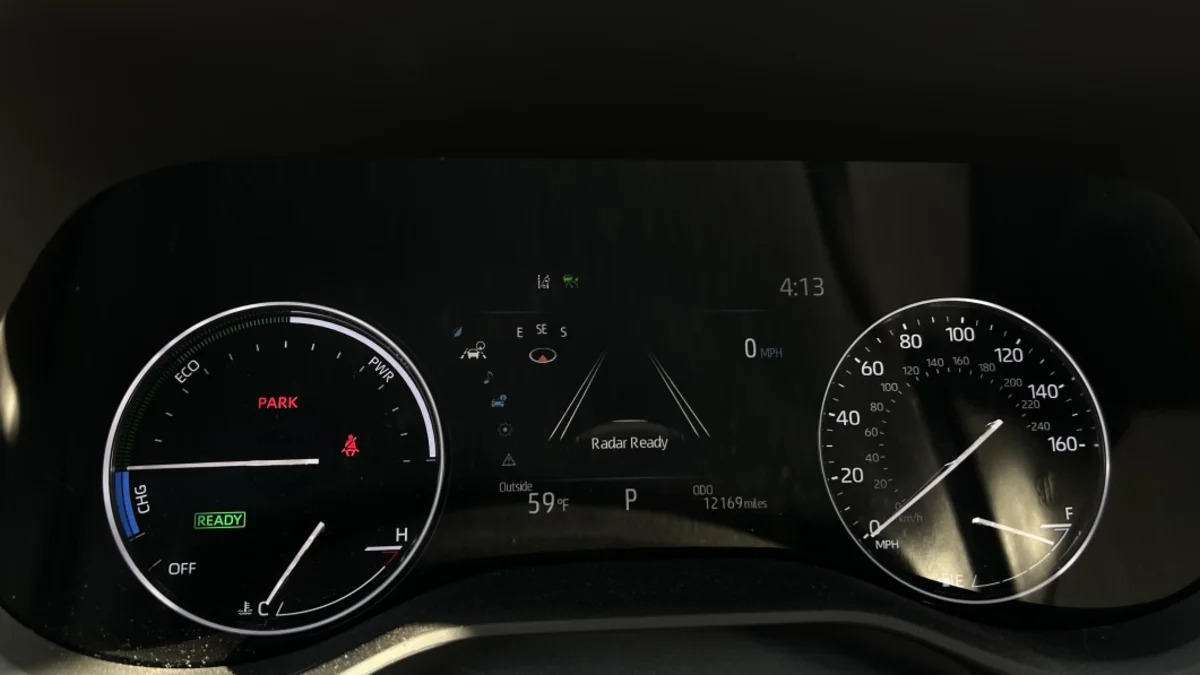I’ve racked up a fair number of miles in our long-term 2023 Toyota Sienna in most situations imaginable at this point, so, it’s time to chat driver assistance systems. The Sienna doesn’t offer any magical hands-free modes or promise the world in terms of unique features, but this is a minivan, which means safety and these sorts of systems are of paramount importance to dissect.
The big ones are adaptive cruise control (with full-speed capabilities) and Lane-Tracing Assist. Toyota’s adaptive cruise is rather smooth in operation, though I’ve noticed it starts slowing a little too early on occasion as you approach slower highway traffic. You’ll eventually be pulled into the range that you set for the following distance, but it’s slow enough to do so that I find myself often being cut off by other motorists as I wait for the Sienna to close to a regular following distance. I’d place most of the blame on people jockeying between lanes here, but there’s no doubt that it ultimately makes using the system a deterrent on busy highways.
That said, if traffic is so busy that it’s stop-and-go, the Sienna is perfectly smooth and works through a traffic jam without stress, sudden stops or abrupt starts. Acceleration can be a little pokey if the car ahead of you whizzes away quickly, but the Sienna isn’t exactly a quick car to begin with.


As for the Lane-Tracing Assist, this system does its best to keep you centered in the lane when adaptive cruise control is on. It does its job, but you’ll need to babysit the wheel in curves and make a fair amount of corrections. Cruising in a straight line is always safe, and its lane placement is solid, but I’ve driven plenty of systems that are far superior to this level of lane-centering, most notably in one of the Sienna’s competitors, the Kia Carnival. Compared to the Honda Odyssey, it’s essentially a dead heat, and everybody’s ahead of Chrysler’s lane-keeping tech. It's also worth mentioning that Toyota makes it abundantly easy to switch this lane-tracing tech on or off as necessary via a hard steering wheel button. You might think that's obvious, but it's unfortunately not the case for every new car today.
I’ve thankfully never needed to use the automatic emergency braking w/pedestrian detection, though I did have a car make a Michigan Left (for those unaware) dangerously in front of me that caused all the alerts to light up and warnings to ring out. It was quite unnecessary since I was able to jam on the brakes safely as soon as the other car made their move, but had I not been paying attention, all of the systems would’ve surely snapped me into focus.
That said, please, everybody, put down your phones – these emergency systems are not a crutch to rely on.

Toyota’s standard blind-spot monitoring system with rear cross-traffic alert hasn’t failed me yet either. The lights in the mirror are easily read in your peripheral vision, switch on at reasonable distances and are just generally nice to have when piloting a vehicle as big as the Sienna. Rear cross-traffic alert is rather handy, too, and I’ve had it chime on many occasions to warn me about an incoming car that I wouldn’t have otherwise been able to see backing out of a spot in a parking lot.
And speaking of that rear camera, it’s not that great. The image is somewhat grainy, and its vision when it’s dark or rainy out has me wanting to turn around and physically look at the rear window instead of relying on a shadowy camera view. On the other hand, the birds-eye 360-degree-view camera on our Sienna Platinum makes parallel parking a breeze and vehicle placement in tight parking lots all the easier.

One piece of tech that’s been wrong on occasion: the Sienna’s auto high-beams. The sensing system is considerably more aggressive in its quest to keep them on than most cars I’ve driven. I’ve had to manually turn the high beams off on many occasions because the system simply wasn’t sensing the oncoming traffic. This sort of behavior is especially bad in inclement weather like any level of rain, but it’s not immune to trying to blind oncoming traffic on perfectly clear days either. It works in (anecdotally) 98% of circumstances, but the other 2% is what you need to watch out for.
The last area of critique I’ll hit is the Road Sign Assist feature that uses a camera to read speed limit and other road signs, then display them back in the dash. Toyota isn’t alone here, but what the car believes and what the actual speed limit is often conflict. It’s a neat feature to have, but unless it’s right 100% of the time, seeing the wrong speed limit displayed in the cluster probably hurts far more than it helps. The moral here is: Know the speed limit.
For all our coverage on our long-term Toyota Sienna, make sure to head here.
Related video:




Sign in to post
Please sign in to leave a comment.
Continue